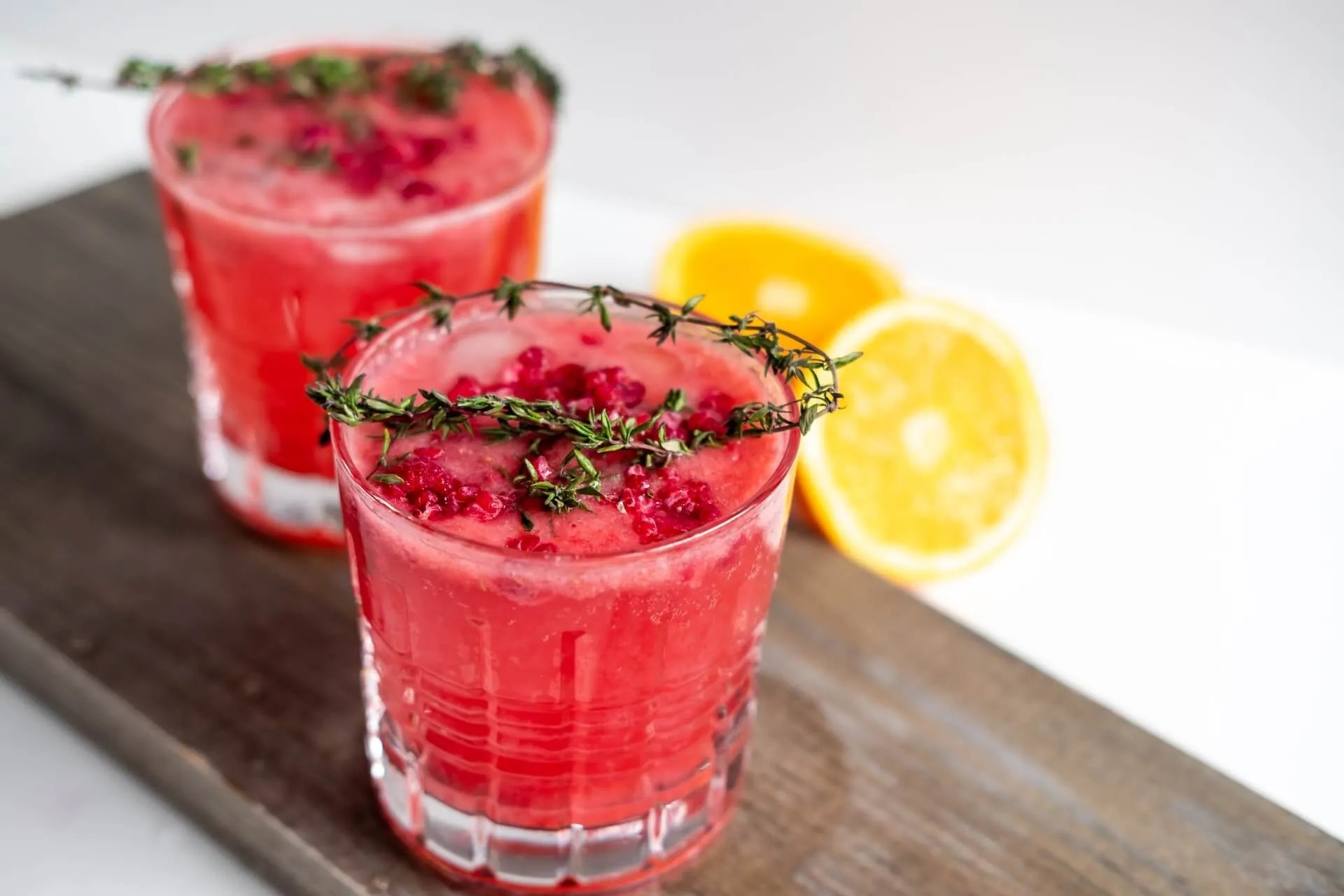When people think about diabetes management, they often focus on the role that food can play in blood sugar control. But what you drink, including alcoholic beverages, can impact your blood sugar levels, too. For one, the body can digest liquids faster than solid foods, increasing the risk of blood sugar spikes after consumption. At the same time, alcohol intake can also impact blood glucose levels through its effects on the liver.1, 2
The liver typically stores and releases carbohydrates between meals to help prevent low blood sugar levels. However, it will prioritize alcohol breakdown over glucose control.
Alcohol is absorbed in the small intestine, transferred through the bloodstream, and metabolized in the liver. The liver breaks down the alcohol to lower your blood alcohol content, shifting its focus away from stabilizing glucose levels.
Still, like any other food or beverage, alcohol does not have to be off-limits to those with diabetes. People living with diabetes can drink alcohol with some consideration and planning to ensure their blood sugar levels stay within their target range, as there are some pros and cons of alcohol for people with type 2 diabetes.
{{mid-cta}}
Smart Sips: 10 Perfect Alcoholic Choices for Diabetes

Research indicates that light or moderate alcohol consumption may be linked to various health benefits, including a reduced risk of mortality, cardiovascular disease, and type 2 diabetes. However, while moderate drinking may provide some health benefits, heavy drinking can increase your risk for diabetes and other health complications. According to the Centers for Disease Control and Prevention (CDC), excessive drinking may negatively impact health.3, 4
The American Diabetes Association and the latest Dietary Guidelines for Americans recommend moderation for those who choose to drink, meaning approximately one drink per day for women and two for men. For reference, one drink is five ounces of wine, a 12-ounce beer, or 1.5 ounces of spirits.1 Still, not all drinks are created equal. Those with diabetes should likely choose alcoholic drinks that are lower in carbohydrates and added sugar, as liquid carbohydrates are absorbed faster.5
Below are ten alcoholic beverages that are lower in carbohydrates, ideal for those watching their blood sugar levels:
1. Red Wine
One drink (or five ounces) of red wine provides 125 calories and 3.8gr of carbohydrates.6
Red wine has the highest amount of polyphenols of any alcoholic beverage. These antioxidants help prevent heart disease and type 2 diabetes.7
2. Light Beer
A twelve-ounce light beer contains 103 calories and 4.6gr of carbohydrate. A regular beer has 12.6gr of carbohydrate.8, 9
Light beer is almost three times lower in carbohydrates than regular beer, making it a better choice for individuals with type 2 diabetes.
3. Dry Martini
A martini is a cocktail drink made with gin and vermouth. Garnished with an olive, lemon, or lime, martinis are very low in carbohydrates, making them suitable for people with diabetes.
A four-ounce martini contains 241 calories and 0.2gr of carbohydrates.10
4. White Wine
Five ounces of white wine contains 121 calories and 3.8gr of carbohydrates. White wine contains half the polyphenols as red wine.11, 7
White wine is a lower carbohydrate option for people with type 2 diabetes.
5. Bloody Mary
A classic Bloody Mary is made with tomato juice, 1.5 ounces of vodka, spices (salt, pepper, Worcestershire sauce, hot pepper sauce), and garnished with olives or celery.
Choose a low or no-added-salt tomato sauce and omit the added salt for a lower-sodium version. This diabetes-friendly mixed drink may contain anywhere between 6 to 9gr of carbohydrates, depending on how diluted you’d like your drink to taste.12
The tomato juice retains some of the fiber, unlike most juices. Tomato juice contains all your vitamin C needs, is a good source of vitamin A, and is a rich source of another antioxidant, lycopene. Lycopene reduces inflammation that can contribute to heart disease and type 2 diabetes.13
6. Hard Seltzer
Hard seltzer combines carbonated water, alcohol, and a small amount of fruit juice. It is low in carbohydrates and similar to beer in alcohol content and serving size.
A twelve-ounce can of hard seltzer provides 100 calories and 2gr of carbohydrates.14
7. Distilled Spirits
Distilled spirits or hard liquor contain virtually no carbohydrates and 97 calories in a one-and-a-half-ounce serving size. They include tequila, rum, gin, vodka, whiskey, and bourbon.15
The carbohydrate content depends on what you mix into the distilled spirits. Juices and sugar-sweetened beverages like soda can add a significant amount of carbohydrates.
8. Brut Champagne
A glass of brut or extra brut champagne can be an excellent drink choice while managing blood sugar levels. A 5-ounce glass of brut champagne contains 4.2gr of carbs. However, if making mimosas, be mindful of your ingredient ratios, as orange juice will increase the drink’s carbohydrate content.16
9. Vodka Soda
Vodka soda is made by combining vodka with club soda or seltzer. Since vodka doesn’t contain carbohydrates, this can be an excellent low-carb drink for people with diabetes. However, if you’d like a flavored vodka soda, opt for flavored seltzer water instead of flavored vodkas, as those typically contain added sugar.15
10. Brandy
When consumed on its own or diluted with water, brandy contains zero carbs. It can be a flavorful choice for those who want to enjoy a rich drink without affecting their blood sugar levels.17
Whatever alcoholic beverage you choose, read the nutrition facts and its list of ingredients. When choosing alcoholic beverages with type 2 diabetes, avoid drinks that have a lot of added sugar and carbohydrates. This may include margaritas, sangrias, daiquiris, and pina coladas.
<div class="pro-tip"><strong>Also Read: </strong><a href=alcohol-and-muscle-growth>Does Alcohol Impair Weight Loss and Muscle Growth?</a></a>.</div>
How Many Carbs Do Alcoholic Beverages Contain?

Drinking alcohol and maintaining steady blood sugar levels can be tricky with insulin resistance, as the energy derived from alcohol doesn’t require insulin like the energy obtained from carbohydrates, protein, and fat. Furthermore, many people assume that all alcoholic beverages are high in carbs when, in reality, there are many low-carb, sugar-free alcoholic drinks.
Wine is an excellent example of the range of carbohydrates that alcohol may contain. For example, a typical 5-ounce glass of red wine contains less than 4gr of carbohydrates, while the same serving size of dessert wine contains 20gr.18, 11
Spirits are also low in carbs, but adding sugary mixers can alter the carb content of your drink. For instance, 1.5 ounces of whiskey served over ice contains 0 grams of carbs. However, adding club soda and syrup to make a highball can increase its overall carbohydrate content.15
While carbohydrate-rich drinks may seem like an easy solution for preventing hypoglycemia, blood sugar control is more nuanced. Liquids are absorbed more quickly in the body, so beverages aren’t a practical choice for treating or preventing low blood sugar levels that might occur hours later. The carbohydrates found in solid food are digested more slowly, offering better protection against a blood sugar crash.1
Lastly, alcohol contains calories, which can add up quickly, especially when drinking may impair your judgment about food choices. Drinking alcohol may impact your weight loss goals or lead to weight gain over time. And since the size of drinks will vary, it can be challenging to track how many carbs and calories you’re consuming.
Carb content of alcoholic beverages:
| Alcohol Type | Serving Size | Carbs per Serving |
|---|---|---|
| White Wine11 | 5oz | 3.8gr |
| Red Wine18 | 5oz | 3.7gr |
| Whiskey15 | 1.5oz | 0gr |
| Vodka15 | 1.5oz | 0gr |
| Gin15 | 1.5oz | 0gr |
| Rum15 | 1.5oz | 0gr |
| Beer9 | 12oz | 12.6gr |
| Light Beer8 | 12oz | 4.6gr |
What Drinks Should You Avoid if You Have Type 2 Diabetes?
When managing type 2 diabetes, it’s important to remember that alcoholic drinks can impact your blood sugar control at varying levels. While some beverages can safely fit into a well-balanced diet, others may significantly skew your daily carbohydrate intake or interfere with critical medications.
Here are some drinks you may need to limit or avoid if you have type 2 diabetes:
- Dessert Wines: Dessert wines, known for their sweetness, aren’t like your average glass of wine. They’re typically very high in both sugar and alcohol.
- Traditional Cocktails: Cocktails made with sugary mixers, such as soda, tonic water, syrups, and juices, may spike blood sugar levels. Examples may include margaritas, pina coladas, old fashions, vodka sodas, and daiquiris, among others.
- Liqueurs: Liqueurs tend to be loaded with added sugar and can cause dramatic fluctuations in blood sugar levels, even when consumed in small amounts.
Furthermore, you may need to avoid drinking alcohol altogether if you experience high blood pressure, nerve damage, eye damage, and elevated triglyceride levels, as alcohol may worsen those conditions. Your doctor can help you navigate the many factors involved in deciding whether or not alcohol can fit into your lifestyle, accounting for its impact on your overall health.19
Alcohol and Diabetes: Tips for Safe Consumption
For those with diabetes mellitus, it’s crucial to be mindful of your alcohol intake and your body’s response to various drinks. Alcohol can impact blood sugar levels in unpredictable ways, triggering harmful side effects. Some alcoholic beverages, like beer, spirits, and wine, contain different amounts of carbs between brands and may impact blood sugar levels differently. Furthermore, alcohol may interact with certain medications, increasing the risk of hypo- or hyperglycemia.
By making informed and safe choices when drinking, those with diabetes can reduce the risk of unhealthy blood sugar fluctuations. If you can safely include alcohol in your diet, consider these tips for drinking alcohol while managing diabetes:
- Eat before or while drinking
- Moderation is key (limit to one drink for a woman and two drinks for a man)
- Choose wisely; pick lower-carbohydrate alcoholic drinks
- Monitor blood sugar to prevent low and high blood sugar levels
- Consider low-sugar modifications like using diet soda or sugar-free mixers to make your drinks
- Opt for non-alcoholic beverages as needed
And, of course, seek guidance from your healthcare provider regarding alcohol use. There’s no one-size-fits-all way to incorporate alcohol into a well-balanced, diabetes-friendly diet safely.
Using a CGM with Signos: Real-Time Data, Backed by AI
Signos pairs a real-time glucose biosensor with AI trained on tens of millions of data points to deliver personalized, science-backed guidance for weight management and health. See exactly how your body responds, and take action.
Learn how it works. Ready to get started? Join now.
<p class="pro-tip"><strong>Keep reading: </strong><a href="/blog/low-calorie-alcoholic-drinks">9 Low-Calorie Alcoholic Drinks for Weight Loss</a>.</p>
Topics discussed in this article:
References
- Sundborn G, Thornley S, Merriman TR, et al. Are Liquid Sugars Different from Solid Sugar in Their Ability to Cause Metabolic Syndrome?. Obesity (Silver Spring). 2019;27(6):879-887. doi:10.1002/oby.22472
- Steiner JL, Crowell KT, Lang CH. Impact of Alcohol on Glycemic Control and Insulin Action. Biomolecules. 2015;5(4):2223-2246. Published 2015 Sep 29. doi:10.3390/biom5042223
- Hendriks HFJ. Alcohol and Human Health: What Is the Evidence?. Annu Rev Food Sci Technol. 2020;11:1-21. doi:10.1146/annurev-food-032519-051827
- Centered for Disease Control and Prevention. Alcohol Use.
- USDA. Dietary Guidelines for Americans, 2020-2025.
- USDA FoodData Central. Red Wine.
- Ditano-Vázquez P, Torres-Peña JD, Galeano-Valle F, et al. The Fluid Aspect of the Mediterranean Diet in the Prevention and Management of Cardiovascular Disease and Diabetes: The Role of Polyphenol Content in Moderate Consumption of Wine and Olive Oil. Nutrients. 2019;11(11):2833. Published 2019 Nov 19. doi:10.3390/nu11112833
- USDA FoodData Central. Light Beer.
- USDA FoodData Central. Regular Beer.
- USDA FoodData Central. Martini.
- USDA FoodData Central. White Wine.
- USDA FoodData Central. Bloody Mary Mix.
- Khan UM, Sevindik M, Zarrabi A, et al. Lycopene: Food Sources, Biological Activities, and Human Health Benefits. Oxid Med Cell Longev. 2021;2021:2713511. Published 2021 Nov 19. doi:10.1155/2021/2713511
- USDA FoodData Central. Hard Seltzer.
- USDA FoodData Central. Distilled Spirits.
- USDA FoodData Central. Brut Champagne.
- USDA FoodData Central. Brandy.
- USDA FoodData Central. Red Wine.
- Hendriks HFJ. Alcohol and human health: what is the evidence? Annu Rev Food Sci Technol. 2020;11(1):1-21.




.svg)










.svg)
.svg)
.svg)
.svg)
.svg)
.svg)
.svg)
